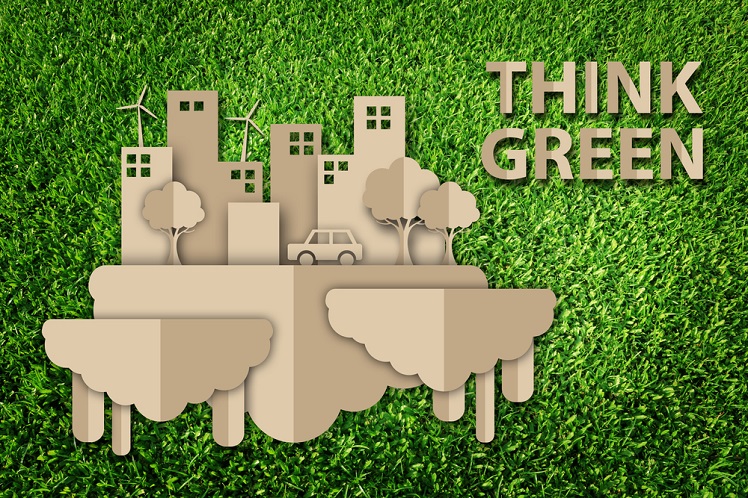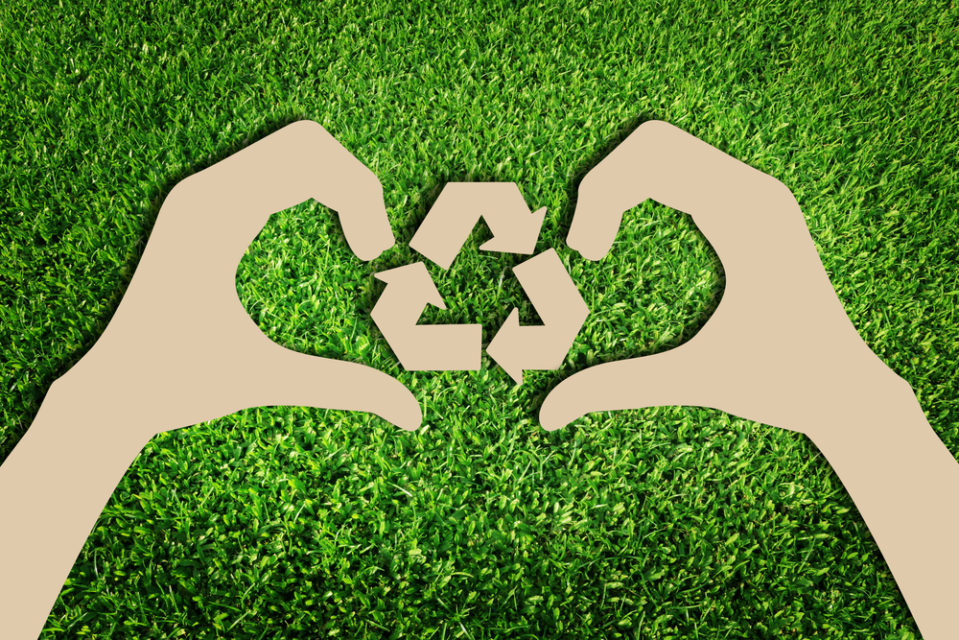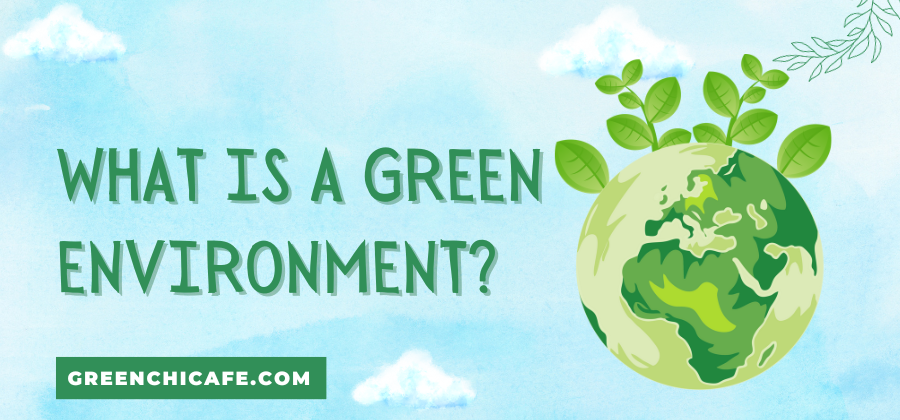Last Updated on June 3, 2024 by Annie Baldwin
Living green means making choices that are good for the environment.
It involves developing habits that work with the planet’s natural resources and promote conservation.
A green environment refers to a sustainable lifestyle that considers the impact of our actions.
What Is a Green Environment?

Green environment refers to making lifestyle choices that are environmentally sustainable and conscious of our ecological impact.
It involves reducing waste, conserving energy and water, eating locally sourced food, and using eco-friendly products.
The goal is to protect natural resources and promote environmental well-being.
Key Points
- Involves sustainable choices to reduce environmental impact
- Conserves natural resources like water, land, and energy
- Reduces pollution and protects ecosystems
Our Opinion
Living green is crucial for the future health of our planet.
Even small daily choices can make a meaningful difference when adopted widely.
We believe everyone has a role to play in creating a sustainable green environment.
Why Go Green?

Living sustainably provides many benefits beyond helping the environment. Here are some key reasons to adopt an eco-friendly lifestyle:
- Saves money – Reducing energy and water use lowers utility bills. Buying less stuff cuts spending.
- Improves health – Walking and biking more boosts fitness. Eating organic produce reduces toxin exposure.
- Supports local economies – Purchasing local goods circulates money in communities.
- Creates jobs – Renewable energy production employs millions of people.
- Reduces waste – Reusing materials decreases trash and landfill growth.
- Preserves natural resources – Conservation protects clean air, water, and biodiversity.
Beyond these practical benefits, living sustainably also feels good. Taking green actions aligns with values like environmental stewardship and social responsibility. Small everyday choices make a collective impact. Eco-friendly habits empower people to positively influence the future.
Transitioning to a greener lifestyle does not require perfection. Any progress helps the planet. Start with small steps like bringing reusable bags when shopping or taking shorter showers. Building momentum with these changes makes it easier to tackle bigger goals over time. With a little creativity, living sustainably can be accessible and rewarding.
When it comes to green living, small changes in our daily habits can make a big difference. Here are some practical ways to incorporate sustainability into your lifestyle:
- Reduce energy use at home by switching to LED lights, installing insulation, and lowering the thermostat.
- Cut back on driving by walking, biking, carpooling, or taking public transit whenever possible.
- Lessen your water wastage by taking shorter showers, turning off the tap when brushing your teeth, and watering plants efficiently.
- Go paperless by signing up for e-bills and minimizing printing. When you do print, use both sides of the paper.
- Buy local and seasonal produce from local urban farms to reduce the environmental impact of transport.
- Bring reusable bags, bottles, and containers when shopping to cut down on waste.
- Compost food scraps and yard waste rather than sending them to landfills.
- Donate, repair, or repurpose items instead of throwing them out.
When making purchases, look for products with eco-friendly certifications, minimal packaging, and natural ingredients. Support green companies and avoid polluting industries when possible.
While individual actions may seem small, collectively they make a tremendous difference. Green living benefits the environment while also improving our health and communities. With some creativity, we can find ways to incorporate sustainability into all aspects of our lives.
Green Living Practices

When it comes to green living, small changes in our daily habits can make a big difference. Here are some practical ways to incorporate sustainability into your lifestyle:
- Reduce energy use at home by switching to LED lights, installing insulation, and lowering the thermostat.
- Cut back on driving by walking, biking, carpooling, or taking public transit whenever possible.
- Cut your water footprint by taking shorter showers, turning off the tap when brushing your teeth, and watering plants efficiently.
- Go paperless by signing up for e-bills and minimizing printing. When you do print, use both sides of the paper.
- Buy local and seasonal produce to reduce the environmental impact of transport.
- Bring reusable bags, bottles, and dishes like coffee mugs when shopping to cut down on waste.
- Compost food scraps and yard waste rather than sending them to landfills.
- Donate, repair, or repurpose clothes instead of throwing them out.
When making purchases, look for products with eco-friendly certifications, minimal packaging, and natural ingredients. Support green companies and avoid polluting industries when possible.
While individual actions may seem small, collectively they make a tremendous difference. Green living benefits the environment while also improving our health and communities. With some creativity, we can find ways to incorporate sustainability into all aspects of our lives.
The environmental benefits of living green are far-reaching. Adopting sustainable practices helps conserve natural resources like water, energy, and raw materials. It also reduces pollution, greenhouse gas emissions, and waste. This protects ecosystems, mitigates climate change, and safeguards the planet for future generations. What’s more, green living makes efficient use of existing resources, which boosts sustainability. By being mindful of our consumption habits and environmental impact, we can transition to a cleaner, greener lifestyle that nurtures rather than harms our planet.
Fostering Green Communities
Going green is not just an individual pursuit – collectively, our communities can drive large-scale change. Here are some ways to cultivate sustainability on a neighborhood or city-wide scale:
- Organize community clean-ups to remove litter from parks, beaches, rivers, and public spaces.
- Advocate for more bike lanes, sidewalks, and public transit to reduce dependence on cars.
- Start community gardens and food co-ops to provide local organic produce.
- Install EV charging stations and bike shares to enable carbon-free transportation.
- Host repair cafes and clothing swaps to extend the lifecycle of possessions.
- Push for renewable energy programs and energy efficiency incentives.
- Create local composting systems to reduce food waste.
- Preserve green spaces and support urban forestry efforts.
On a policy level, citizens can push for greener building codes, plastic bag bans, and other environmental regulations. Forming sustainability committees and task forces ensures that green initiatives become integrated into local government.
Community-based education campaigns can also shift social norms and behaviors over time. For instance, promoting meatless Mondays, anti-idling, and zero-waste practices.
Transitioning to sustainable systems requires mobilizing residents, businesses, nonprofits, and government entities. By working together, communities have the power to drive systemic change from the ground up.
FAQ
What Does Green Environment Mean?
A green environment refers to living in a way that is environmentally sustainable and conscious of our impact on the planet. It involves making choices that conserve natural resources, reduce pollution, and protect ecosystems and wildlife.
Why Is Green Environment Important?
A green environment is important because the planet has limited natural resources. Living sustainably ensures enough resources will be available for future generations. It also reduces the negative impacts of human activities like pollution and habitat destruction.
How Do You Make a Green Environment?
You can make a green environment by actions like reducing energy and water consumption, eating locally grown foods, using renewable energy, recycling, avoiding plastics, and choosing eco-friendly products. Simple daily choices can reduce your environmental footprint.
What Is Clean and Green Environment?
A clean and green environment is one that is not polluted and has healthy ecosystems. It has clean air, water, and soil. A clean environment allows people, plants, and animals to thrive in a healthy habitat.
Conclusion
So, what is a green environment? It refers to living in a way that conserves natural resources and reduces negative impacts on the planet. It involves making sustainable choices in areas like energy use, transportation, food, and consumer products. Living green is important to protect ecosystems, reduce pollution, mitigate climate change, and conserve resources for the future. With simple daily choices, we can all contribute to a cleaner, greener, and more sustainable environment.
